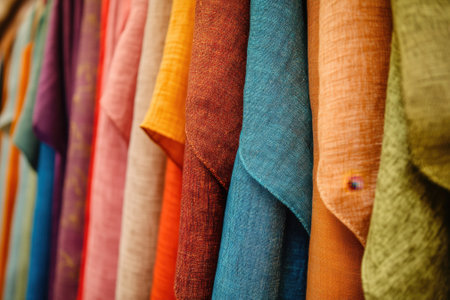1. Introduction to Colour Meanings in India
In India, colours are much more than just visual elements—they are woven into the very fabric of daily life, symbolising deep cultural meanings and emotions. From the vibrant hues seen during festivals like Holi and Diwali to the carefully chosen shades in traditional attire, colours play a significant role in expressing joy, spirituality, and social values. Each colour communicates a unique message, whether it is the red worn by brides for prosperity or the white attire at solemn occasions symbolising peace. Understanding these warm and cool colour choices not only helps in appreciating Indian art and traditions but also offers insight into how Indians connect with one another and their surroundings through the language of colour.
2. Warm Colours in Indian Context
In India, warm colours like red, orange, and yellow hold special significance and are deeply woven into the fabric of everyday life, rituals, and festivities. These vibrant hues are not just visually appealing; they carry profound meanings and are associated with prosperity, warmth, and spirituality.
Symbolism of Warm Colours
Warm colours are seen as auspicious in Indian culture. Red, for instance, symbolizes purity, love, and marital bliss. It is a dominant colour in weddings, where brides traditionally wear red sarees or lehengas. Orange represents sacredness and is often linked to saints and spirituality. Saffron robes are commonly worn by Hindu monks to signify renunciation. Yellow stands for knowledge, learning, and happiness. It is especially prominent during religious ceremonies like Vasant Panchami, when people wear yellow clothes to celebrate the arrival of spring.
Common Uses of Warm Colours
| Colour | Indian Rituals | Weddings | Celebrations & Festivals |
|---|---|---|---|
| Red | Kumkum (vermilion) used in puja; sindoor for married women | Bride’s attire; wedding décor | Diwali decorations; rangoli patterns |
| Orange (Saffron) | Sacred threads; holy fires (yagna) | Flower garlands; festive drapes | Holi colours; flags in temples |
| Yellow | Tumeric applied in Haldi ceremony | Outfits for pre-wedding functions | Vasant Panchami celebrations; sweets distribution |
Cultural Associations
The use of these warm colours goes beyond mere tradition—they evoke a sense of positivity and togetherness. During festivals like Diwali and Holi, homes are adorned with marigold flowers (yellow-orange), diyas (lamps), and vibrant rangolis that bring families together in celebration. The presence of red at weddings signifies the beginning of a prosperous journey for the couple. Thus, warm colours play an essential role in expressing joy, reverence, and hope in Indian society.

3. Cool Colours and Their Indian Interpretations
In Indian culture, cool colours like blue, green, and white are rich in meaning and tradition. These hues often evoke a sense of tranquility, spirituality, and harmony, which are deeply valued in Indian society. Blue holds a special place as it is associated with the divine and the infinite. Lord Krishna, one of the most beloved deities in Hinduism, is often depicted with blue skin, symbolising his cosmic nature and the vastness of the sky and ocean. Blue also represents calmness and protection, making it a popular choice for religious art and temple décor.
Green is another significant colour that symbolises life, renewal, and fertility. In many parts of India, green is worn during important festivals such as Eid by Muslim communities and is also prominent in wedding celebrations to bring luck and prosperity. The lush greenery of India’s landscape further reinforces the positive connotations of this colour in daily life.
White, meanwhile, stands for purity, peace, and simplicity. It is commonly used in spiritual rituals and ceremonies across religions. While white attire is often associated with mourning in Hindu traditions, it also marks moments of reverence and new beginnings in other contexts. White is widely used to decorate temples and homes during sacred occasions, emphasising clarity and spiritual focus.
The use of these cool colours extends beyond religious symbolism into traditional décor. Walls painted in soothing blues or greens create a serene atmosphere in homes and places of worship. White marble is a hallmark of iconic Indian architecture such as the Taj Mahal, representing timeless beauty and serenity. By understanding these meanings, we gain insight into how cool colours continue to shape aesthetics and cultural practices throughout India.
Colours in Indian Festivals and Traditions
Indian festivals are vibrant expressions of the country’s rich cultural heritage, and colour plays a vital role in every celebration. Both warm and cool colours are intricately woven into the fabric of Indian festivals, symbolising joy, prosperity, spirituality, and togetherness. Let us explore how these hues are celebrated in some of the most popular Indian festivals such as Holi, Diwali, and Eid, and what each colour signifies during these occasions.
Holi: A Riot of Warm and Cool Colours
Holi, often referred to as the ‘Festival of Colours’, is perhaps the most vivid example of how Indians celebrate with both warm and cool shades. During Holi, people throw coloured powders known as gulal on each other. Warm colours like red, orange, and yellow represent love, energy, and happiness. Cool colours such as blue and green signify harmony, renewal, and peace. The use of all colours together breaks social barriers and brings communities closer.
Diwali: Lights, Warmth, and Auspicious Hues
Diwali, the ‘Festival of Lights’, is adorned with radiant warm colours that evoke feelings of festivity and positivity. Homes are decorated with marigold flowers (yellow-orange), rangolis (colourful floor patterns), and oil lamps or diyas. Red symbolises auspiciousness; gold stands for wealth and success; while green represents growth. Cool colours like blue are less prominent but are still seen in decorative motifs and festive attire.
Eid: Elegance Through Subtlety
Eid celebrations embrace a more understated palette compared to Holi or Diwali. Cool colours like white, green, and blue dominate the festival, symbolising purity, peace, and spirituality. Many families choose to wear new clothes in these shades as they gather for prayers and feasting. However, warm accents—such as gold embroidery or red bangles—add a touch of festivity to the occasion.
Symbolic Colour Meanings in Indian Festivals
| Festival | Warm Colours & Their Meanings | Cool Colours & Their Meanings |
|---|---|---|
| Holi | Red (love), Yellow (joy), Orange (energy) | Blue (calm), Green (renewal) |
| Diwali | Gold (prosperity), Red (auspiciousness) | Green (growth), Blue (peace) |
| Eid | Gold (celebration), Red (accent) | White (purity), Green (spirituality), Blue (serenity) |
Cultural Importance Across Regions
The significance of these colours can vary by region within India but always remains deeply rooted in tradition. Whether it’s draping a red saree during Diwali puja or wearing a green kurta on Eid morning, colours express sentiments that words cannot capture. Understanding these colour choices helps us appreciate the warmth and unity at the heart of every Indian festival.
5. Practical Applications: Choosing Colours in Indian Design
When it comes to choosing warm and cool colours within the Indian context, understanding their deeper meanings and practical uses can help you create more harmonious and meaningful spaces or outfits. Here are some essential tips for making colour decisions for various aspects of Indian life:
For Special Occasions and Festivals
Warm colours like red, orange, maroon, and gold are often preferred for festive occasions such as weddings, Diwali, or Holi. These shades signify prosperity, happiness, and spiritual energy. When attending or hosting an event, opt for these vibrant hues to create a joyful and auspicious atmosphere. Cool colours such as blue and green are considered calming and are often used during religious ceremonies or peaceful gatherings like pujas or meditation sessions.
Interior Design Tips
Indian homes often reflect both tradition and comfort. For living rooms or family spaces, using warm tones like yellow ochre, terracotta, or deep reds can foster a welcoming environment that encourages conversation and togetherness. In contrast, bedrooms and study areas benefit from cool shades like light blue, soft green, or lavender to promote relaxation and focus. Combine traditional motifs with your chosen colour palette for a truly Indian touch.
Fashion Choices
Indian attire celebrates the bold use of colour. When selecting sarees, kurtas, or lehengas, consider the occasion—bright warm colours work beautifully for daytime events and celebrations while cooler tones are ideal for evening gatherings or formal functions. For daily wear in hot climates, lighter cool shades not only provide comfort but also align with the seasonal mood.
Blending Warm and Cool Colours
Don’t be afraid to mix both palettes! Pairing a deep red dupatta with a navy blue kurta or adding golden accents to a teal saree creates visual interest while respecting cultural aesthetics. The key is balance—let one set of colours dominate while the other complements subtly.
Final Thought
By being mindful of the symbolism and practical impact of warm and cool colours in Indian culture, you can make thoughtful choices that enhance the beauty and emotional resonance of your surroundings—whether at home, at an event, or through what you wear.
6. Conclusion: Embracing the Indian Colour Palette
Understanding the significance of warm and cool colours in Indian culture goes far beyond aesthetic choices—it is about respecting the rich heritage, emotions, and meanings that colours hold for millions of people across the country. From vibrant reds and yellows symbolising celebration to calming blues and greens representing peace and renewal, each shade plays a unique role in daily life, festivals, rituals, and personal expression. By being mindful of how we use colours—whether in clothing, home décor, or special occasions—we honour these cultural traditions and show respect for those around us. Let us embrace India’s diverse colour palette with sensitivity and awareness, making conscious choices that celebrate unity in diversity and bring positivity into every aspect of our lives.

